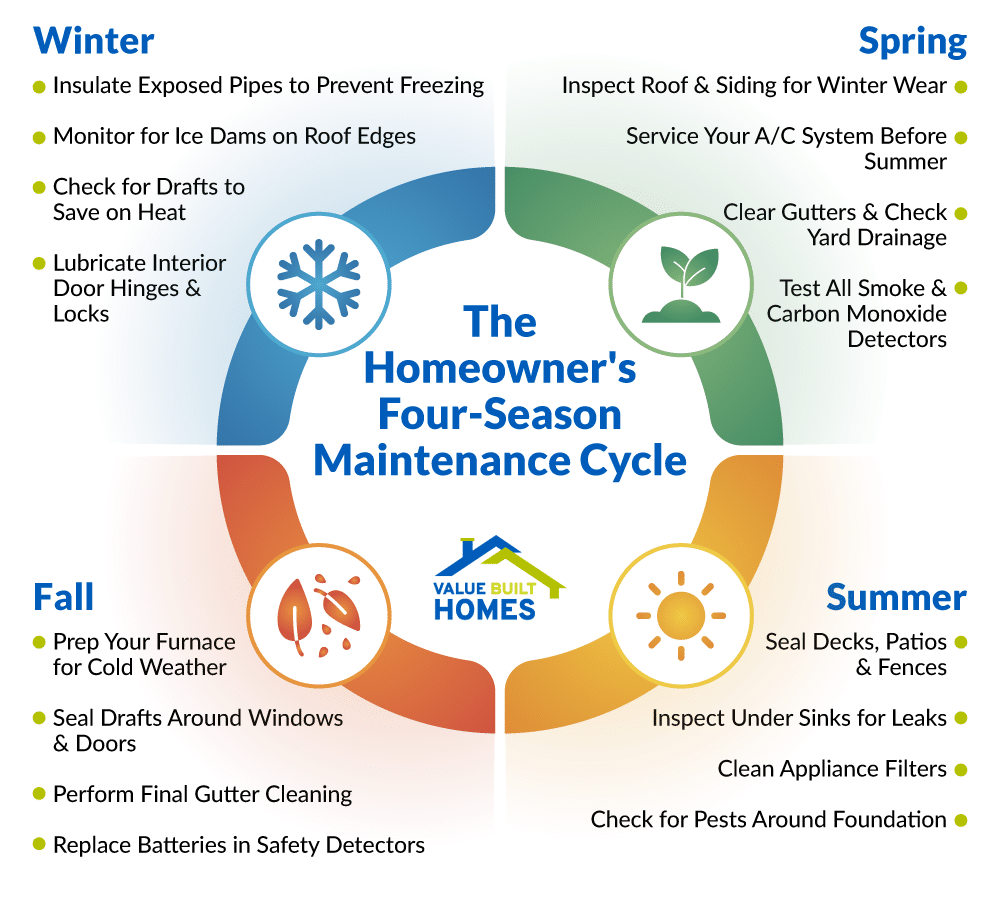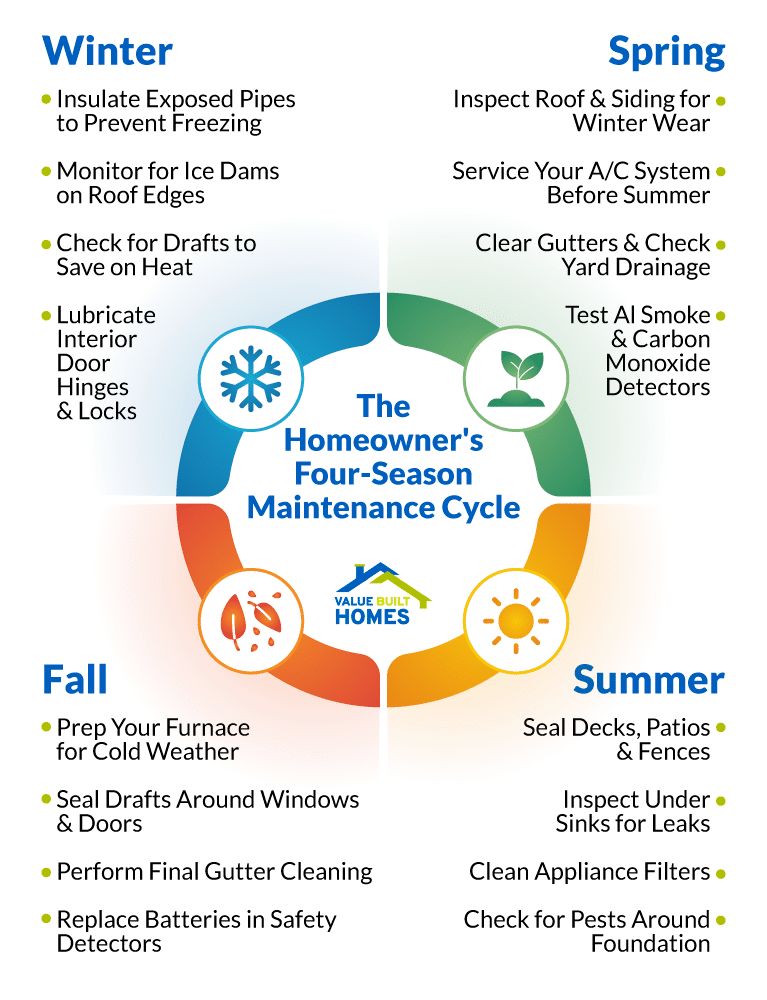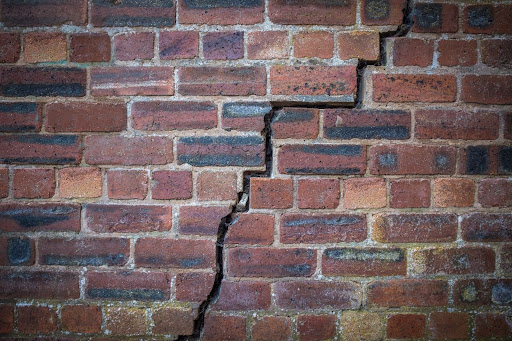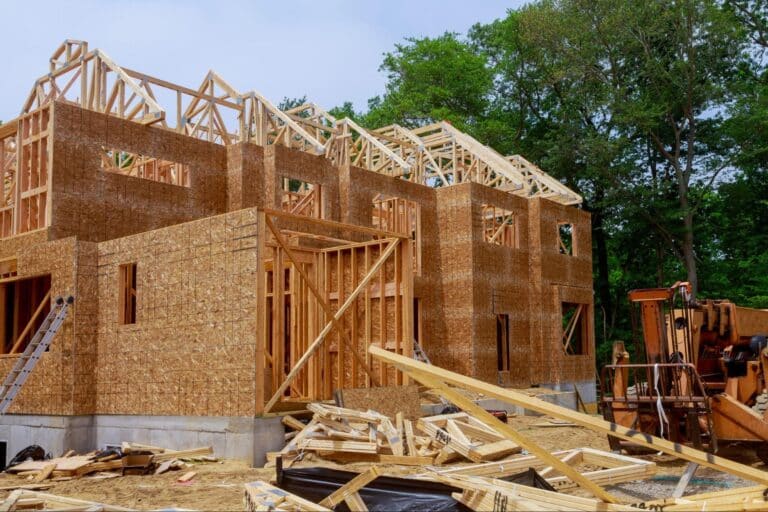Owning a new construction home is an exciting milestone filled with modern comforts and energy-efficient systems. Although these homes require fewer immediate repairs, regular upkeep remains essential to avoid costly issues and preserve your investment. This guide offers concise, actionable tips to help homeowners maintain both the interior and exterior of their new homes, ensuring lasting value and efficiency. By understanding the unique needs of new constructions, you can proactively address potential issues and enjoy a worry-free homeownership experience.
Why Regular Maintenance is Crucial for New Homes
Even the best-built homes need routine care. Regular maintenance helps to:
- Extend Lifespan: Small tasks like cleaning gutters and replacing HVAC filters reduce wear on key components.
- Save Money: Addressing minor issues early—such as fixing a roof leak—prevents expensive repairs later.
- Boost Efficiency: Sealing gaps and servicing systems improves energy efficiency and lowers utility bills.
- Retain Value: A well-maintained home maintains its appeal and enhances resale value.
Taking the time to routinely inspect and maintain your home not only forestalls the onset of severe structural issues but also creates an environment where technology and modern design can truly shine. When maintenance is prioritized, homeowners experience fewer surprises and costly emergencies, ensuring that their home remains a sound long-term investment.
What Makes New Construction Homes Unique?
New construction homes offer modern systems and materials but require specific attention:
- Settling and Structural Adjustments: Minor shifts and small cracks can occur as the home settles. Monitor these changes and contact experts if unusual patterns emerge.
- Builder Warranties: Understand your warranty details to ensure routine maintenance does not void coverage. A home buyers warranty offered by home builders, like Value Built Homes, can cover structural defects and key systems for years
- Advanced Systems: Modern HVAC, insulation, and energy-efficient appliances may have specialized care requirements. Following ENERGY STAR guidelines helps you keep these systems in optimal shape.
Developing a maintenance plan that takes into account these unique characteristics is key. Educating yourself about the warranty provisions and manufacturer recommendations empowers you to make informed decisions that protect your home in the long run.
Your First Year: Special Maintenance Considerations
The first year in a new home involves a unique settling-in period. Here’s how to manage the normal adjustments you might see:
- Nail Pops & Drywall Cracks: It’s normal to see minor drywall cracks or nail pops as your home settles. These are cosmetic, not structural. It’s best to wait until the end of the first year to fix them all at once.
- Paint Touch-Ups: Ask your builder for the paint codes or any leftover paint. Having the exact match on hand makes fixing minor scuffs from moving in quick and seamless.
- Warranty Check-In: Before your one-year warranty expires, conduct a final walkthrough. Create a list of any non-cosmetic issues (like sticking doors or faulty latches) and submit it to your builder to ensure everything is addressed.
Year-Round Guide to Proactive Home Maintenance


A proactive maintenance plan is the key to preserving your home’s value and efficiency. Instead of worrying about what to do and when, follow this seasonal guide. It breaks down essential interior and exterior tasks into a manageable, year-round schedule.
Spring: A Fresh Start for Your Home
As the weather warms, it’s the perfect time to inspect for winter damage and prepare for the seasons ahead.
- Inspect Your Home’s Exterior: After winter storms, walk around your property. Check for damaged or missing roof shingles that could lead to leaks. Examine the foundation and walls for any new cracks or signs of wear.
- Service Your Systems: Before the summer heat arrives, schedule a professional inspection for your air conditioning system to ensure it runs efficiently. Inside, conduct your monthly check of smoke and carbon monoxide detectors.
- Clean Gutters and Downspouts: Clear out any leaves and debris that accumulated over the winter. Clean gutters are crucial for preventing water from pooling near your foundation, which can cause significant damage.
- Manage Your Landscaping: Ensure the soil around your home slopes away from the foundation to promote proper drainage. This is also a good time to confirm that trees and large shrubs are planted a safe distance away to prevent roots from compromising your foundation.
Summer: Peak Season Protection
During the summer, focus on protecting outdoor surfaces and monitoring high-use systems.
- Maintain Outdoor Living Areas: Inspect and refresh protective coatings on decks, patios, and fences. Reapplying sealants to outdoor woodwork can prevent weather damage and extend its life.
- Monitor for Leaks and Drainage: With higher water usage in the summer, it’s a good time to regularly check under sinks and near appliances for any signs of leaks. Address any slow drains promptly to prevent clogs from becoming major plumbing issues.
Fall: Preparing for Colder Weather
Use the cooler autumn weather to seal your home against the coming winter and service key systems.
- Inspect and Seal Gaps: Examine the caulking and weatherstripping around windows and doors. Reseal any gaps to prevent heat from escaping and keep out drafts and moisture, which helps lower energy bills.
- Clean Gutters (Again): As leaves fall, give your gutters a second cleaning to ensure they are clear before winter storms arrive.
- Prepare Your Heating System: Before you need it, have your furnace or heating system professionally serviced. This ensures it operates safely and efficiently when temperatures drop.
- Check Safety Devices: Fall is the perfect time to replace the batteries in all smoke and carbon monoxide detectors, even if they aren’t chirping yet.
Winter: Defending Against the Elements
Winter maintenance is all about protecting your home from the harshest conditions.
- Prevent Ice and Water Damage: After heavy snowfall, safely clear snow from walkways and roof edges. This helps prevent ice dams, which can cause water to back up under shingles and leak into your home.
- Protect Your Plumbing: Insulate any exposed pipes in unheated areas like basements or crawl spaces to prevent them from freezing and bursting.
- Conduct Interior Checks: On the coldest days, check for drafts near windows and doors. Inside, ensure door hinges and locks are lubricated for smooth operation, and plan to reseal grout and stone countertops annually to protect them from stains and moisture.
When to Call a Professional

Some issues require the expertise of trained professionals for accurate diagnosis and repair:
- Structural Concerns: Large cracks, significant settling, or uneven floors may signal serious issues that warrant a professional evaluation.
- Electrical and HVAC Issues: Frequent circuit breaker trips or unusual noises from HVAC units could mean underlying problems needing expert attention.
- Persistent Plumbing Problems: Recurrent leaks or severe blockages not resolved through standard methods may necessitate specialized intervention.
- Hidden Water Damage: Peeling paint, persistent dampness, or musty odors often point to water problems within walls or floors.
Knowing when to escalate maintenance ensures that small issues do not turn into major repairs, preserving the safety and comfort of your home.
Comprehensive Maintenance Planning
Developing a long-term maintenance schedule can save time and reduce stress. Consider these strategies:
- A well-structured maintenance calendar helps you track upcoming tasks by season.
- Note recurring to-dos like filter replacements and also schedule deeper checks, such as professional HVAC tune-ups.
- Keep records of maintenance activities, warranties, and consultations. Proper documentation not only aids in tracking costs but also proves useful if you decide to sell your home.
- Setting aside a budget for unforeseen repairs further safeguards your investment, while periodic evaluations of critical systems optimize home performance.
- Create a “Home Binder” in which appliance manuals, warranty documents, paint color codes, and contact information for professional services.
Establishing a Foundation for Long-Term Home Value
Regular maintenance is the cornerstone of preserving your new construction home’s efficiency, safety, and value. By following the tips outlined—from routine exterior and interior checks to seasonal tasks—you set a solid foundation for long-term upkeep. Tackle maintenance proactively and consult professionals when needed to keep your home thriving.
Whether you’re a proud homeowner looking to the future or are dreaming of building a home that’s made to last, contact Value Built Homes to learn more about our commitment to quality in action.




